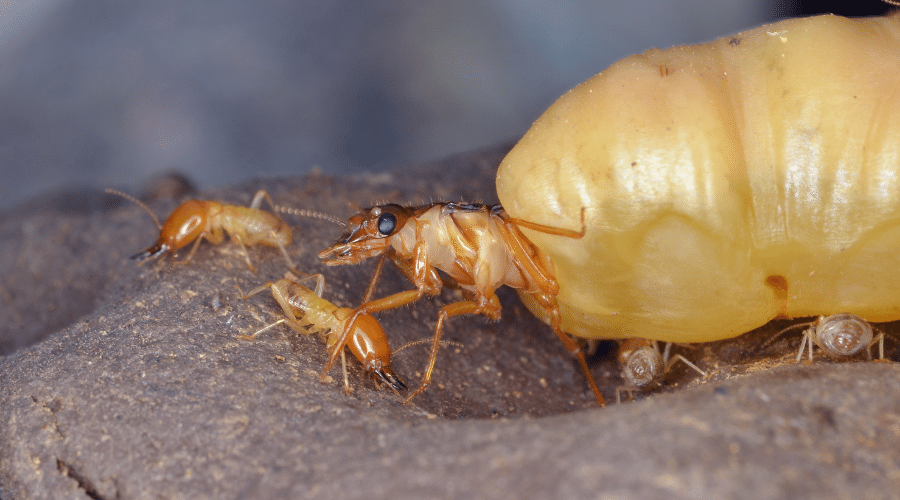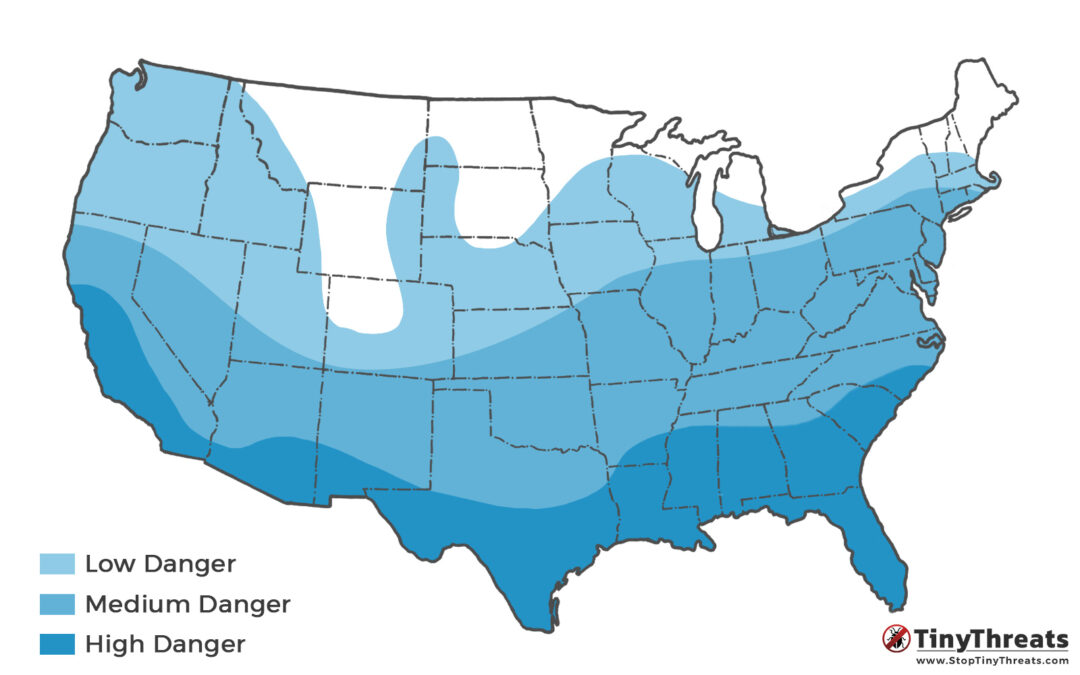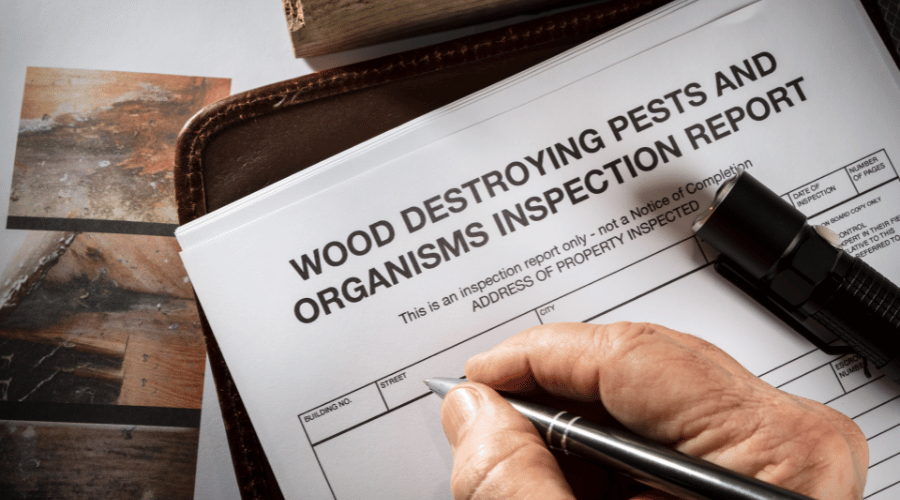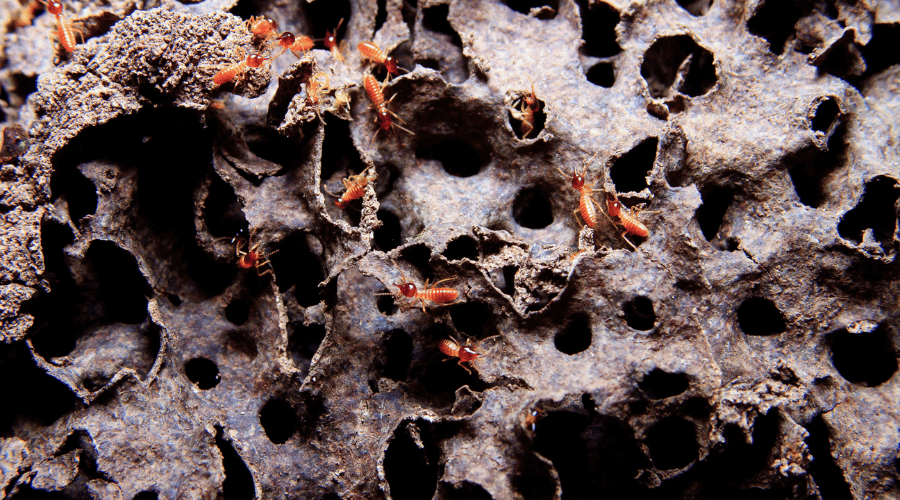A termite queen is the largest and most important member of a colony. She can lay around 2,000 eggs per day and may live for more than 25 years.
As the primary source of new termites, the termite queen is the core of any colony.
However, once the colony is large enough, it may have multiple queens – at which point the number of termites may grow exponentially.
Table of Contents
What are Termite Queens?
To establish a new colony, a female and male termite have to locate a suitable location, then dig in, and soon start producing eggs.
Once there are a decent number of workers hatched and grown, the queen and her king get built a royal cell.
In this special chamber, the queen focuses solely on producing eggs – from a few dozen per day at first, up to 20,000 per day over time.
Keep in mind that the egg production rate depends mainly on the size of the colony (larger colonies support more eggs) and the species of termites.
Identifying the Termite Queen
The size of a termite queen is not much larger than regular termites at first, but once she is settled in a new colony and focuses on egg-laying, her body expands massively. At first glance, she may look like a maggot as her lower body expands over time to produce more and more eggs – to the point where she becomes unable to move.
Termite queens may reach up to around 3 inches in size in common species, or up to 6 inches in the largest termite species.
You can usually recognize her quite easily – but you will probably never see the queen of a colony, as it is the most well-guarded individual. Workers will literally throw themselves over her to protect the queen with their lives if she is threatened.
However, if you manage to kill the (sole) queen of a termite colony, the colony will most likely crumble.
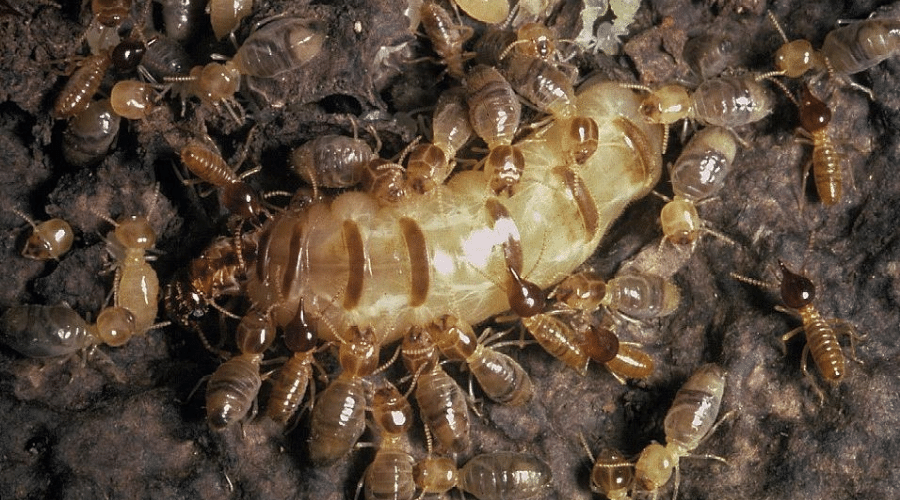
The termite queen is always cared for by workers – once she starts producing eggs, she quickly becomes unable to do much else. Image source
Hierarchy of Termite Colonies
A termite colony is a highly organized society, with a strict hierarchy.
The queen is the most important member of the colony, and she lays all the eggs.
She is surrounded by her workers, who build and maintain the nest, gather food, and care for the young.
The soldiers protect the nest from invaders. Both the workers and the soldier are sterile, and cannot reproduce – even if there are male and female workers and soldiers.
And once a year, a colony develops Alate termites – winged termites that will fly away during swarm season and try to start a new colony.
About 98% of all termites in a colony are workers – only around 2% are soldiers, while only a handful of reproductive termites exist per colony.
Termite Queen Behavior
Once the colony has been established, the behavior of a termite queen is simple to explain: she lays eggs.
Beyond reproduction, a termite queen doesn’t do much. While her pheromones can control the colony’s development, it’s not much of an active job.
However, this is no laziness: Termite queens can, in good conditions, lay up to 20,000 eggs per day – certain African species produce even 40,000 per day. And this can go on for ten years!
The remaining time of her lifespan of around 25-50 years is less productive in terms of eggs laid – but reaching 100 million eggs laid in one lifetime is not an impossible feat for a termite queen in a healthy colony.
These eggs are carried into incubation chambers by workers. The workers also feed and take care of the queen as well as the king.
Multiple Queens are possible
The termite queen also produces special pheromones that can inhibit the development of other reproductive queens. (1) However, once the colony grows big enough, the queen may allow a few secondary queens to develop.
Once a colony has multiple queens, its numbers can grow incredibly fast. These secondary termite queens have their own chambers in which they produce eggs.

